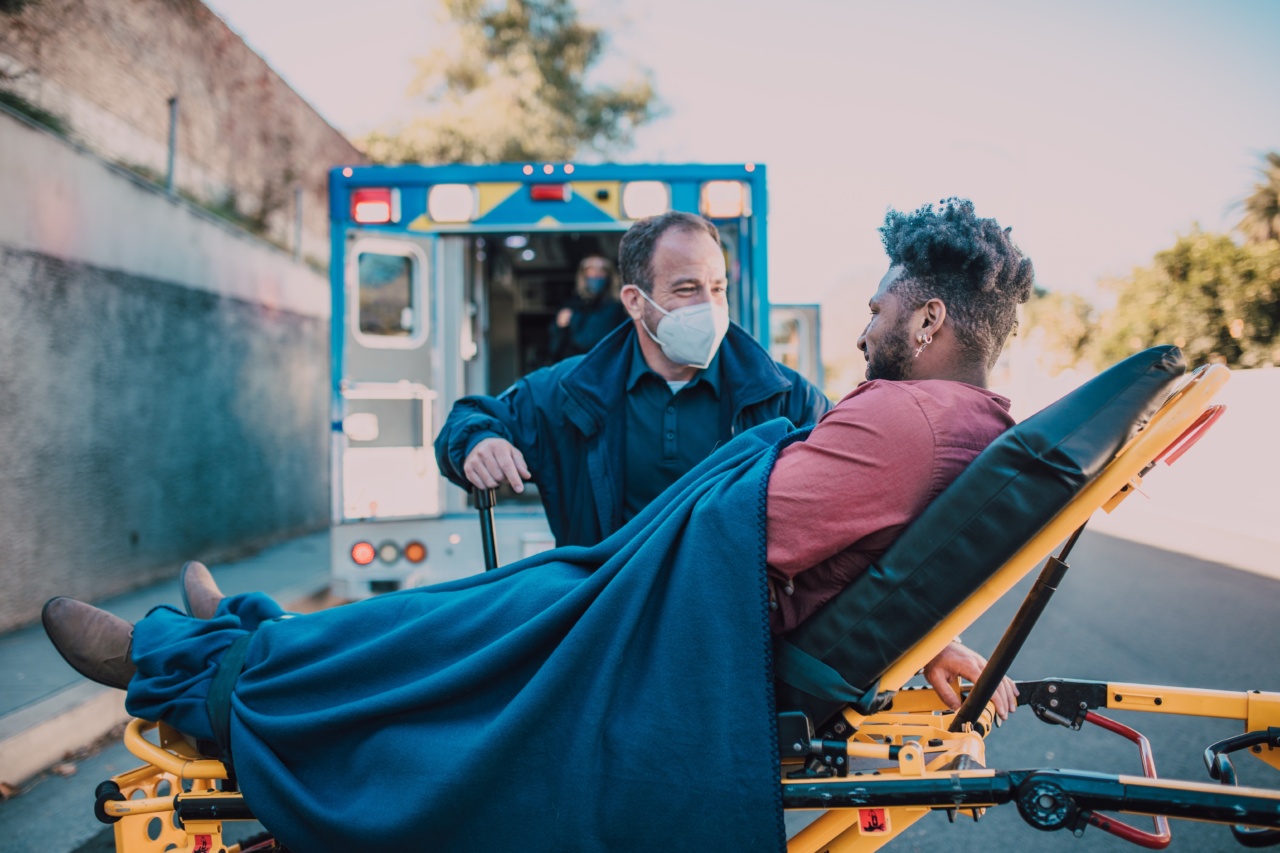Accidents can happen at any time and in any place. One of the most common injuries that can occur during accidents is bleeding. The amount of blood loss depends on the severity of the injury.
If the bleeding is severe, it can lead to shock, which can be life-threatening. First aid is crucial during such scenarios, and every individual must learn the techniques to save a bleeding patient. In this article, we will discuss the techniques for saving a bleeding patient.
Types of Bleeding
Before discussing the techniques for saving a bleeding patient, it is crucial to understand the different types of bleeding. The major types of bleeding are:.
Arterial Bleeding
Arterial bleeding occurs when an artery is cut or punctured. Arteries are blood vessels that carry oxygen-rich blood from the heart to various parts of the body. Arterial bleeding is characterized by the spurt of blood, which coincides with the heartbeat.
Arterial bleeding is the most severe type of bleeding and can be fatal within minutes if not treated promptly.
Venous Bleeding
Venous bleeding occurs when a vein is cut or punctured. Veins are blood vessels that carry blood from the body parts to the heart. Venous bleeding is characterized by continuous bleeding, which is less severe than arterial bleeding.
It is still essential to stop the bleeding as it can lead to a considerable amount of blood loss.
Capillary Bleeding
Capillaries are the smallest blood vessels in the body that connect arteries and veins. Capillary bleeding occurs when these tiny vessels are damaged. Capillary bleeding is characterized by oozing of blood from the wound.
Although it is the least severe type of bleeding, it can still lead to significant blood loss if not treated promptly.
Techniques for Saving a Bleeding Patient
Here are the techniques for saving a bleeding patient:.
1. Direct Pressure
The first technique to stop bleeding is direct pressure. Direct pressure involves pressing the wound with a sterile dressing or a cloth. Place the cloth or dressing over the wound and apply firm pressure until the bleeding stops.
You must be cautious while applying pressure and avoid repositioning the cloth or dressing once you have applied it. Repositioning can dislodge the clot that has formed, which can cause bleeding to start again.
2. Elevation
The second technique to stop bleeding is elevation. Elevation involves raising the bleeding body part above the heart level. Elevating the body part can reduce blood flow to the wound, which can slow down or stop the bleeding.
This technique is effective for injuries such as bleeding from the arms or legs. Keep the elevated body part still and avoid moving it as it can cause the wound to start bleeding again.
3. Pressure Points
The third technique to stop bleeding is pressure points. Pressure points are the areas in the body where the artery is close to the skin’s surface.
Applying pressure on these points can reduce blood flow to the wound, which can slow down or stop the bleeding. The pressure points in the arms are the brachial artery and radial artery, while the pressure points in the legs are femoral artery and popliteal artery. To apply pressure, use your fingers or hand and press the area until the bleeding stops.
4. Tourniquet
The fourth technique to stop bleeding is a tourniquet. A tourniquet is a device that compresses the artery to stop the blood flow. It is used for severe bleeding where the other techniques are ineffective.
A tourniquet can be applied using a belt, a piece of cloth, or a specialized tourniquet. To apply the tourniquet, wrap it around the limb above the injury site and pull it tight. Tighten the tourniquet until the bleeding stops. Remember to release the tourniquet every few minutes to allow some blood flow to the limb.
5. Hemostatic Agents
The fifth technique to stop bleeding is hemostatic agents. Hemostatic agents are substances that help in the formation of a blood clot, stopping the bleeding. Hemostatic agents can be in the form of a powder, gel, or dressing.
Apply the agent over the wound and apply pressure until the bleeding stops.
Conclusion
Bleeding is a severe medical emergency that requires immediate attention. Being able to identify the type of bleeding and applying the appropriate technique can save lives.
The techniques discussed in this article, such as direct pressure, elevation, pressure points, tourniquet, and hemostatic agents, can help stop the bleeding and prevent further complications. It is essential to have a basic understanding of first aid techniques and attend first aid courses to provide prompt assistance during emergencies.





























